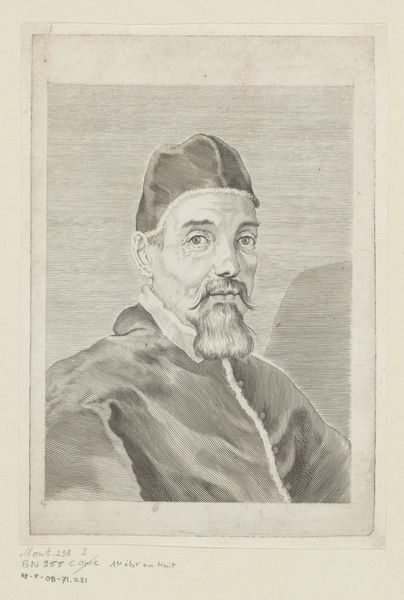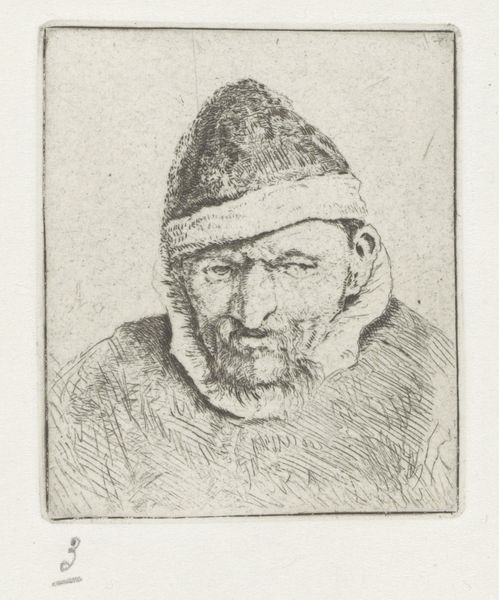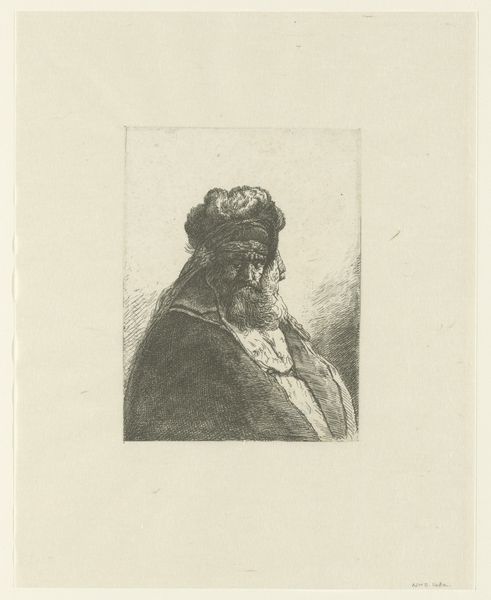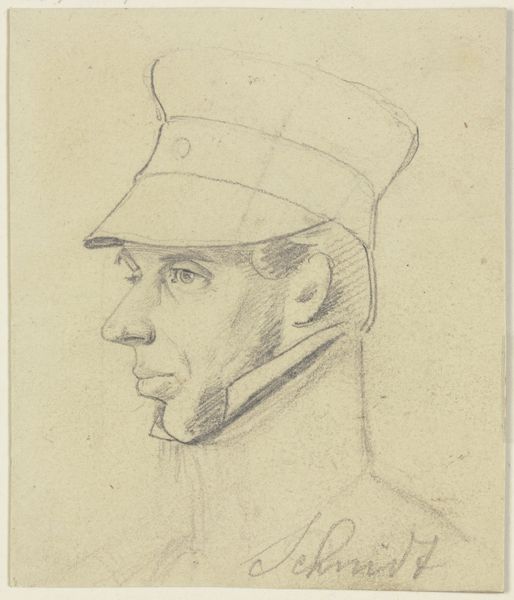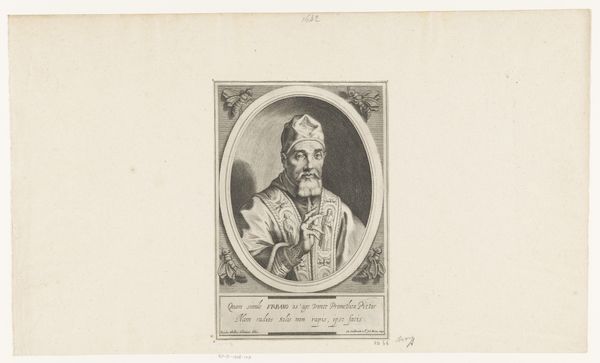
drawing, print, engraving
#
portrait
#
drawing
# print
#
caricature
#
caricature
#
figuration
#
portrait drawing
#
engraving
Dimensions: height 86 mm, width 74 mm
Copyright: Rijks Museum: Open Domain
Elchanon Verveer created this small portrait using etching, a printmaking technique, sometime in the 19th century. In etching, a metal plate is coated with a waxy, acid-resistant substance called a ground. The artist scratches an image into this ground, exposing the metal. When the plate is submerged in acid, the exposed lines are eaten away, creating grooves. Ink is then applied to the plate, filling these grooves. The surface is wiped clean, and paper is pressed against the plate to transfer the ink, resulting in a print. The etched lines in this portrait create a range of tones and textures, from the fine details of the man's face to the dense shading of his hat and coat. This printmaking process, born from the workshops of armorers in the Middle Ages, allowed for the relatively quick reproduction of images. In this way, Verveer's etching democratizes portraiture. By understanding the materials and processes involved, we can appreciate how the artist translated this man's likeness into a multiple, and consider the social implications of this technology.
Comments
No comments
Be the first to comment and join the conversation on the ultimate creative platform.






